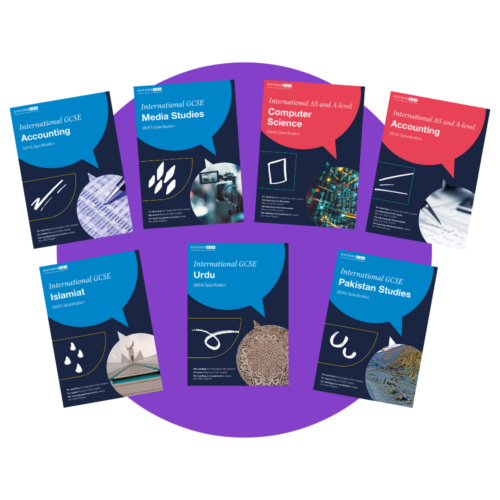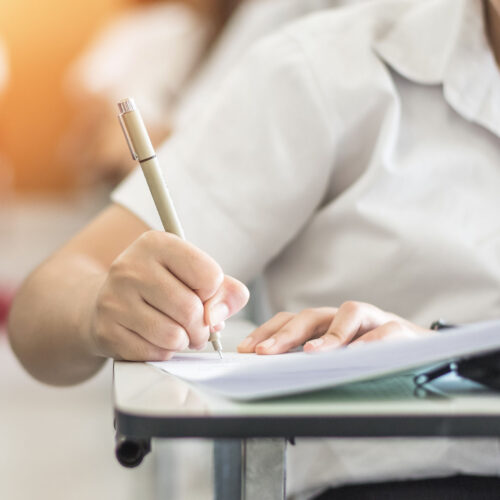
While it’s normal for students to feel a bit nervous around exam time, there are certainly ways that teachers can support their students and help to minimise the stress involved.
Keeping nerves under control in exams is never easy. However, there are techniques that teachers can share with their students to support them during exam periods.
The key question is: how can teachers mentally prepare students so that on the day of their exam, they’re able to perform to the best of their ability?
To answer this, it’s useful to understand what’s happening in our brains when we experience stress, and why stress can have such a negative impact on our performance.
We ran a webinar on this important topic, which was delivered by Louise Aukland, Oxford University Researcher and Oxford International Curriculum advisor. You can watch the full session here.
Different parts of the brain are responsible for different functions.
Understanding the roles the amygdala, the pre-frontal cortex (PFC) and the hippocampus play in the brain’s stress response.
The amygdala is the part that detects danger and aims to keep us safe. It does this by releasing stress hormones, which activate the ‘fight, flight or freeze’ response in order to give us the best chance of survival:
- our muscles tense ready for action
- our breathing quickens to get more oxygen to the brain
- our bodies release sugars and fats into the bloodstream to give us a burst of energy.
As a result, other parts of the brain begin to shut down, including the pre-frontal cortex (PFC). The PFC is responsible for executive functions, such as analysing, decision making and problem solving – all of which students need when they’re trying to answer questions in an exam.
Whilst the ‘fight, flight or freeze’ response might have served us well in primitive times when faced with a sabre-toothed tiger, the problem we have today is one of ‘amygdala hijack’ – where the brain perceives psychological stress as physical danger, and triggers the same stress response.
Understanding the stress response and negative behaviours
When the stress response is triggered and the PFC functions shut down – functions that are key to rational and logical thought processes – it may lead to negative behaviours, which can be really unhelpful in an exam situation.
An example of this might be when a student comes across a question they don’t know. The amygdala interprets this as a threat and the body goes into an emergency response – stress hormones are released, the PFC’s functions are inhibited, and now that student can’t think straight. The anxiety and mental paralysis the students feels at this moment can cause negative behaviour, such as not completing the exam.
To try to protect us from harm, the hippocampus, which is the part of our brains responsible for memory, tends to remember bad experiences and our responses to them more than positive ones. In the example above, then, the brain comes to associate exam-taking as a threat to be avoided, and future exams become a trigger for the stress response.
If we want to support students doing exams, we need to equip them with the tools to manage their individual stress responses so that they’re able to stay calm and maintain concentration and focus.
Taking control of what’s possible
Research has shown that a perception of control helps us to cope better with stress. There are two versions to this – control over our environment, or control over the the way we respond to our environment.
In an exam setting, there’s very little that students can control – they can’t control the time or the location of the exam, or the questions asked. They can’t control noises from outside, or other students’ behaviour. But if we can get students to recognise and focus on the things they can control, it will help them to feel more calm and relaxed when they go to sit the exam.
So as well as making sure our students are academically prepared for their exams, we can also help them to be mentally prepared using the 5 strategies listed below.
5 strategies to help your students manage exam stress
Now that you have a better understanding of what happens to the brain and body when the stress response is triggered, you can teach this knowledge to your students. It can be very empowering for them to discover that it’s perfectly normal to feel anxious or worried in particular situations, and that essentially, it’s just our brain’s way of trying to protect us.
You can also explain how the ‘fight, flight or freeze’ response causes them to experience a range of physical symptoms – upset tummy, shaking, rapid heartbeat, shortened breathing, and so on – which can remove some of the additional fear associated with these bodily sensations.
To help students transition from an anxious to a relaxed mindset, either in an exam or during the lead up to an exam, you can teach them a few simple breathing techniques which will calm the amygdala and re-engage their PFC.
‘Square breathing’ is simply breathing in for a count of four, holding for four, breathing out for four, and then holding for four again. Or students could also try ‘711’ breathing – they breathe in for a count of seven, and then out for 11.
Some students don’t like to focus on their breathing, so they could try ‘finger breathing’ instead. This is where they trace a finger around the edge of their other hand, breathing in for five as their finger goes up their thumb, and then out for five as it goes down the thumb. They continue this, going up and down each finger in turn, breathing in for five and out for five as they do so.
An ’emotional check-in’ is a mindfulness-based exercise that you can practice with your class at any time. It gives students the opportunity to pause for a moment and to focus on what’s happening in their bodies and their minds at that time – things they might not notice when they’re busy doing their day-to-day activities.
Students can be standing or sitting, with their eyes open (but looking down to avoid distractions) or closed. Tell them to focus on the part of their body that’s touching a solid surface – their feet on the ground if standing, or their bottom on their chair if sitting. This is called grounding.
Then ask them to do a quick scan from their feet all the way up to their head, just noticing how each part of their body feels – do their legs ache? Does their mouth feel dry? Are their shoulders tense? And when they reach the head, to think about their thoughts – are they calm and relaxed or jittery and unsettled?
After the check-in, students can think about how they might make a more informed response to what they were feeling rather than just reacting. If their shoulders are tense, they might stretch. If their mouth is dry, they could go and get a drink. If their mind is agitated, they could try some finger breathing.
If students do this exercise regularly, but at different times of the day and in different situations, they’ll start to become more aware of what their own personal stress triggers are and how they respond to them. They can they start to manage them more successfully.
Plenty of research has shown just how important sleep is for learning – when we’re asleep our brains embed and consolidate all the information we’ve picked up during the day.
Here are some top tips for getting a good night’s sleep that you can share with your students:
- Don’t nap during the day, or, if you must, restrict naps to no more than 20 minutes and don’t take them close to bedtime.
- Avoid foods and drinks that make it harder to sleep, such as caffeine and sugar.
- Try to get up and go to bed at the same time every day, even at weekends, to regulate your sleep clock.
- Create a calm environment conducive to sleep – a cool, quiet, dark room is ideal.
- No phones before bedtime – the blue light they emit wakes the brain up!
The idea behind cognitive restructuring is to replace negative, unhelpful thoughts that make us feel stressed and anxious, with ones that are more balanced and positive.
A great example of this that you can try with your students is to get them to repeat ‘I’m excited, I’m excited, I’m excited’ before an event or situation that’s likely to trigger a stress response. As the physiological symptoms of stress are the same as those for pleasure and excitement, telling ourselves we’re excited instead of anxious can shift a negative mindset to a positive one – something that’s particularly useful in an exam.
By working on these 5 strategies with your students throughout the year, and well in advance of exams, you can help them identify their own stress signatures. Then when exam anxiety hits, students will be better equipped to manage it.
Further guidance and support
Managing exam stress webinar
In our webinar, OxfordAQA expert Louise Aukland further discusses exam stress and provides more suggestions to help you assist your students, enabling them to show their abilities in exams.
Watch our webinarSupporting wellbeing in the classroom
You can find 6 methods of supporting students’ wellbeing in the classroom in our blog post.
Read our blog postOxford Wellbeing in Secondary Schools course
Take this short, self-paced course on what underpins effective wellbeing in schools, providing you with useful strategies for success.
Take the course


